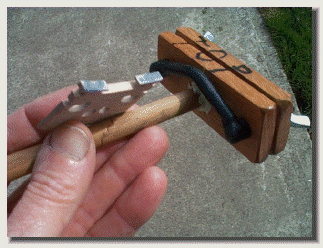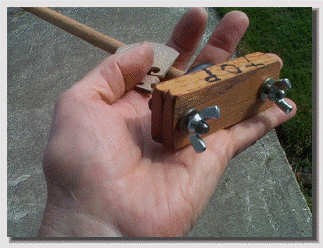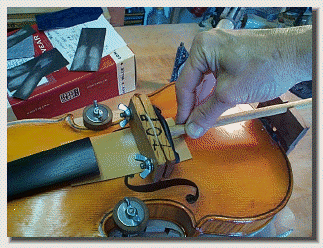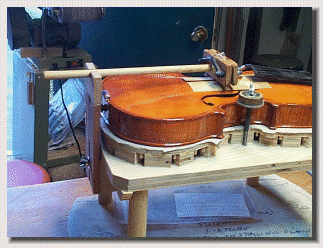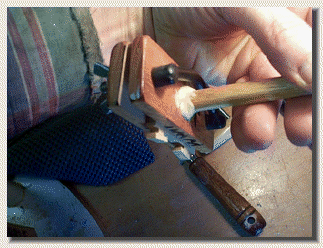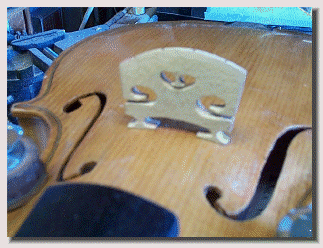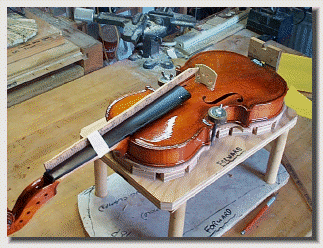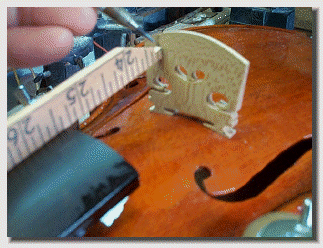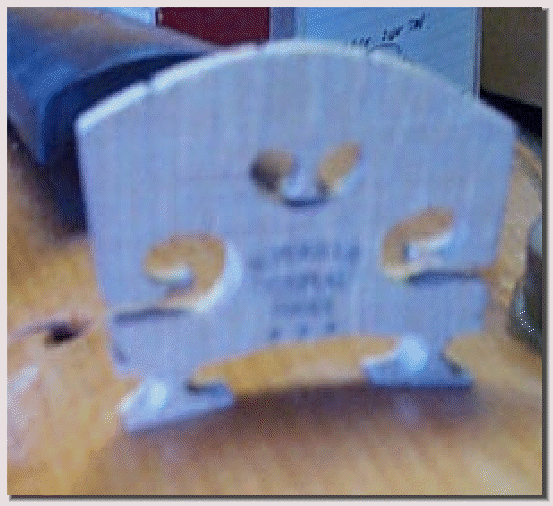Bridge shaping for full sized violins.... Part # One / of Six
...The first thing we need to do is purchase a quality bridge blank...
" The best Bridges are from France... 'Despiau 3 star' is an excellent choice {you can order them from www..tonewood.sk (S.V.S. Tonewoods of Slovakia) or (as I have been told) from Eastman Supply Co.}"
... Since all the music this instrument makes will be transmitted through the bridge, this is one place not to scrimp, if sound quality is important to you.
... 2017 Update: After a year dedicated to wood selection properties, I believe a Wood Tone of 242 HZ for the bridge wood and a Rub Tone of # 22 will yield the best . Please see other sections to understand Rub and Wood tone......
..10/2020: Also explore the "syncronous resonance" property.
...Some of surfaces of the bridge will not be touched by us in fitting the bridge, others must be. The back side will be left as is (toward the tail piece), for instance. The bridge is the correct width, but is too tall, too thick and the feet are too tall. A good place to start is fitting the feet perfectly to your instrument. I will share my personal set up procedure:
Fitting the bridge feet to your instrument...
..Click Here for :
(revised 10/ 2020
Page AA_013)
...Here the violin body is clamped on the horizontal support and the bridge foot shaping tool is installed.
...It consists of a hardwood dowel which is firmly attached to a hardwood block at exactly a 90 degree angle.
...Notice that there is a board behind the end pin. Its purpose is to provide a slot for the dowell to slide back and forth in. It is adjustable up and down with the pictured wing nut and set up with an accurate level laid on top of the horizontal hardwood dowel.
...With the bridge blank clamped in the holder, a piece of sand paper is laid face up and the bridge feet sanding tool is slid back and forth to shape the bridge feet to the shape of the instruments actual top shape. Finer and finer grades of sand paper are used until a perfect fit is achieved. (# 100, # 150, #400 for instance). You can also put a piece of carbon paper down and rub the bridge feet over it to show clearly what the contact is.
...The two wing nuts on the face side, stradle the bridge blank and lock the bridge firmly during the feet shaping operation.
...When the feet are the correct thickness and the bridge will stand 'on its own two feet' with the back perpendicular to the top plate, then the feet shaping is done. This will insure good sound transmission to the top plate.
...Through this block a 'U' shaped bolt with two wingnuts passes; this is the bridge clamp bolt. It is installed thorugh oversize holes so it can rotate slightly.
...Now because the bridge makes an eight degree angle, the inside surface of the front clamp board is sanded to this same eight degree angle, so when the bridge is sandwiched between the two hardwood blocks, the outside face is parallel with the back of the block with the hardwood dowell attached.
...The next job is to define the top arc of our new bridge. The strings will lie in shallow grooves about 1/3 of the string diameter deep; the wood above this level will be removed and the top shaped to a smooth curve.
...A straight edge with the proper clearance over the end or the finger board, for each string defines the top curve of the bridge.
...Now it the time to carve down the bridge to its final dimensions.
...These are my recommendations for full sized violin bridges; I was taught these measurements by Richard Biggs (who owns a violin shop in the greater Chicago area) during the VSA convention in Portland, Oregon.
...I tried this modification on the bridge of one of my finished violins and it made a noticable improvement; so I tried it on others and it always seemed a positive change, so now it is my standard for carving new bridges.
...Using a NEW blade in my X-acto blade holder, carve the shapes being careful to only cut down grain (with the grain).
41mm
1.615"
5mm
0.197"
16mm/ 0.630"
13mm/0.512"
Lines in blue are areas to carve; other areas are left in tact for now.
The top surface is reduced to 1 to 1 1/2mm (0.040"-0.060")
...The front surface is tapered smoothly back to this string contact surface on the other side. This back (Label) side in not touched.
...Lower the string grooves in the bridge (using a jewlers tapered round file) until the distance from the fingerboard to the strings are (for synthetic strings):
String : *distance in inches: *distance in mm:
G 0.197" 5 mm
D 0.170" 4.3mm
A 0.146" 3.7mm
E 0.118" 3.0mm


